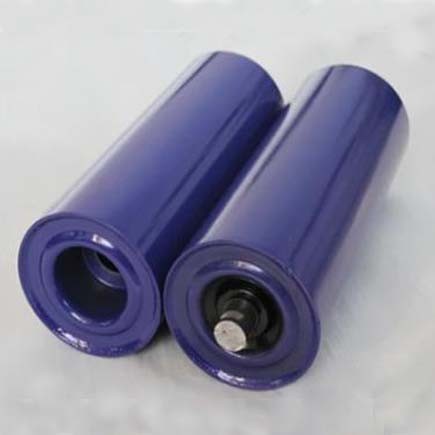conveyor rollers are cylindrical objects that are used in conveyor systems to transport materials from one point to another. They are typically made from materials such as stainless steel, aluminum, plastic, or rubber and are often coated with a non-slip surface to prevent slippage of materials being conveyed. Conveyor rollers can be either powered or unpowered, depending on the specific application and the required level of automation.
In powered conveyor systems, the conveyor rollers are connected to a motorized drive system that moves the rollers, which in turn move the materials being conveyed. These types of conveyor systems are commonly used in manufacturing plants, distribution centers, and warehouses to move products and materials from one location to another.
On the other hand, unpowered conveyor systems rely on gravity to move materials. In these systems, the conveyor rollers are positioned at a slight angle, so that when materials are placed on the conveyor, they naturally roll downhill, propelled by gravity. These types of conveyor systems are commonly used in transportation and logistics, as well as in manufacturing and assembly lines where gravity can be used to move products from one station to another.
belt conveyor Roller
The design of conveyor rollers can vary depending on the specific application and requirements of the conveyor system. Some common types of conveyor rollers include:
Gravity rollers: These are unpowered rollers that rely on gravity to move materials. They are typically made from steel or plastic and are designed to be used in a wide range of applications.
Powered rollers: These are rollers that are connected to a motorized drive system that moves the rollers, which in turn move the materials being conveyed. They are typically used in manufacturing plants, distribution centers, and warehouses.
Tapered rollers: These are rollers that are wider at one end than the other. They are typically used in conveyor systems where materials need to be guided to a specific location.
Grooved rollers: These are rollers that have grooves or channels in them, which help to guide materials along the conveyor. They are typically used in conveyor systems that transport materials with uneven surfaces.
Sprocketed rollers: These are rollers that have teeth or sprockets on them, which are used to drive the conveyor chain or belt. They are typically used in conveyor systems that require a high level of precision and accuracy.
Polyurethane rollers: These are rollers that are made from polyurethane, a durable and resilient material that is resistant to abrasion and wear. They are typically used in conveyor systems that transport heavy or abrasive materials.
Stainless steel rollers: These are rollers that are made from stainless steel, which is resistant to rust and corrosion. They are typically used in conveyor systems that transport materials that are sensitive to contamination.
The selection of conveyor rollers will depend on several factors, including the specific application, the weight and size of the materials being conveyed, the speed of the conveyor system, and the environment in which the conveyor is operating. For example, in a manufacturing plant where conveyor systems are exposed to high temperatures, conveyor rollers made from materials that can withstand high temperatures may be necessary.
In addition, the design of the conveyor system itself can impact the type of conveyor rollers that are required. For example, in a curved conveyor system, tapered rollers may be needed to ensure that materials are guided through the curve smoothly and efficiently.
Proper maintenance of conveyor rollers is essential to ensure that the conveyor system operates efficiently and effectively. This can include regular cleaning and lubrication of the rollers, as well as inspection for signs of wear or damage. If a roller is damaged or worn, it should be replaced immediately to prevent further damage to the conveyor system and to ensure the safety of workers.

 ZOOMRY
ZOOMRY

